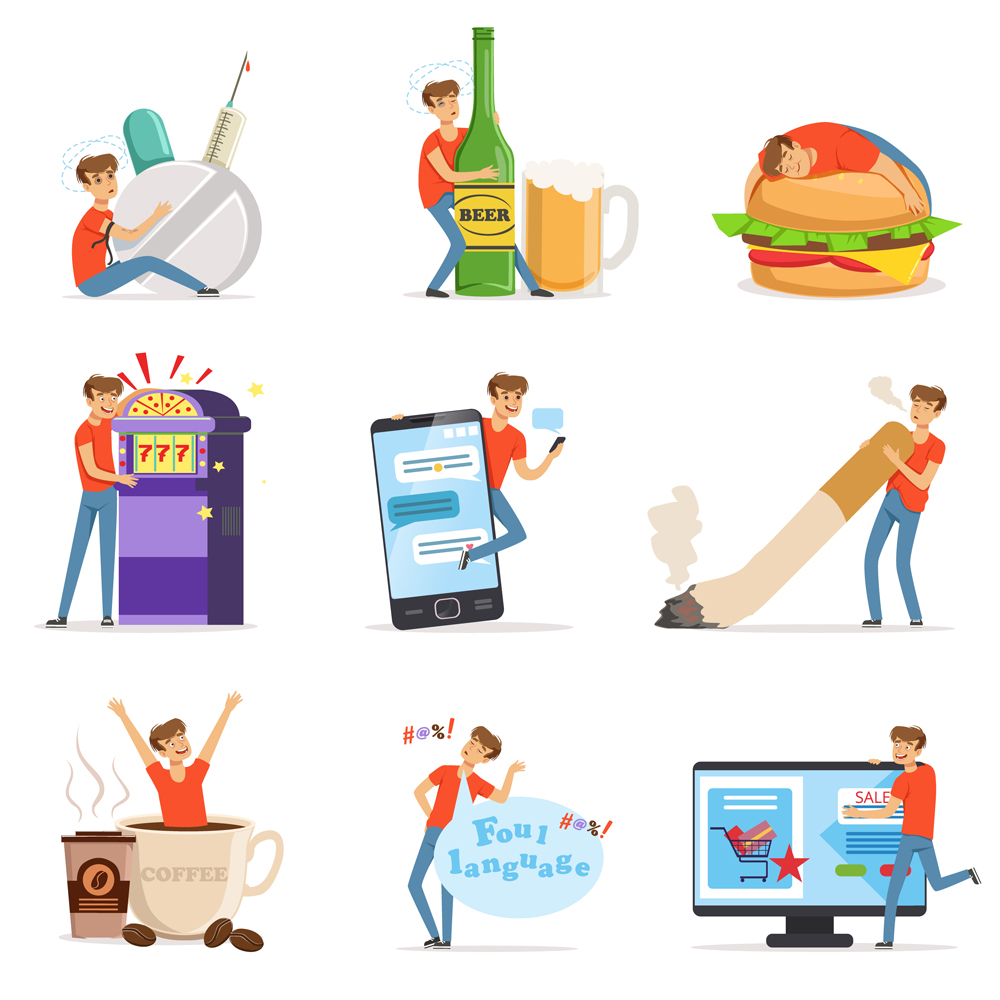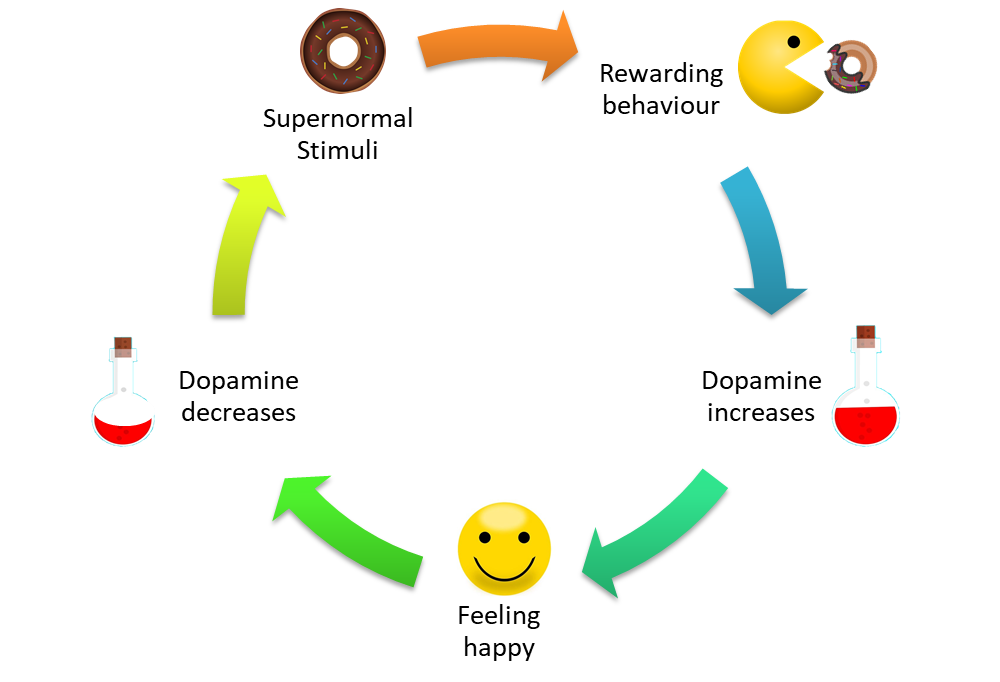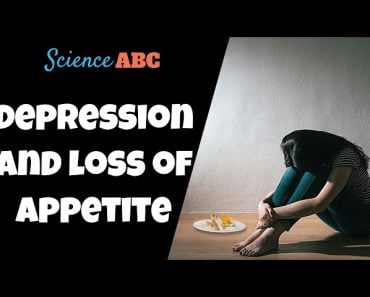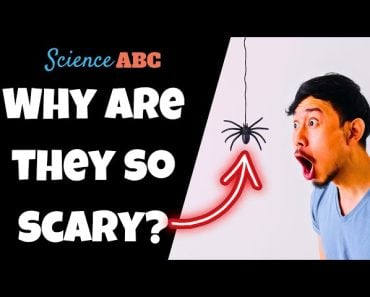Humans and other animals have a natural attraction to flamboyant meals and objects. Exaggerated versions are always persuasive, but does bigger always imply better?
Think of a happy meal from McDonald’s with its deep-fried chicken and crispy French fries alongside a spicy dip. Or what about a candy bar packed with chocolate and nougats. How about a scoop of Cookies ‘n Cream ice cream? Who can say no to these delicacies? We are all powerless to these finger-lickin’ meals… and perhaps our brains should be blamed for this.

Recommended Video for you:
Junk Food And Supernormal Stimuli
You might have a school diploma or a fancy college degree, but deep down, we still have the instincts of our hunter-gatherer ancestors. And what need drove our ancestor’s instincts more than any other? Food. Whenever they got their hands on some food, they chowed down on as much fat and sugar as possible, for who know when the next meal would arrive?
Today, most people have easy access to food, but our tongues and brain don’t know that. Our instincts still encourage us to eat as much as possible in preparation for a possible famine. No wonder we can’t say no to a meal with concentrated sugar, salt, and fat, but are these compulsions limited to just junk food?
Not really. Additionally, there is a specific term used to describe such extra-intense stimuli, like junk food—supernormal stimuli.
A supernormal stimulus is a stimulus that elicits a stronger reaction than the stimulus for which the original response mechanism originated. The behavioral response to the supernormal stimulus was first observed by Niko Tinbergen, a well-known behavioral scientist.
Supernormal stimuli are more common than you think. They’re everywhere, from the cosmetics you use to enhance your natural features (making lips redder and cheeks rosier) to huge-eyed stuffed toys (that make us go “Aww”).
For ages, clothing, and postures that accentuate the hips, thighs, butt, and breasts have been produced (high heels are the best example). And don’t forget the babies who happily suck on larger-than-normal plastic pacifiers, even though there is no mother or milk accompanying it.
We can see this in art as well. An example of this is the 30,000-year-old statue, the “Venus of Willendorf.” It shows a woman with exaggerated body parts. We see something similar in cave paintings depicting shamans dressed up in animal skins and feathers that could act as a hyped-up stimuli to invoke longing, fear, or wonder in the audience. In today’s age, we see blown-up or modified bodies through photoshopped images or plastic surgeries.
Unsurprisingly, most of these supernormal stimuli are artificially created signals created by our cultural tools.

Also Read: Why Do We Love Unhealthy Foods So Much?
Why Is The Brain Attracted To Supernormal Stimuli?
When we choose to eat junk food, the quantity of a certain neurotransmitter (a chemical in the brain that sends messages between different brain cells) in our brain increases. This chemical is called dopamine, and it is associated with how we experience reward and pleasure.
Rewards can be defined as any goal or object that we seek, such as food. When we complete a “rewarding activity,” our brain releases dopamine, which makes us feel amazing. The brain then recalls how gratifying this experience was and tries to repeat or learn that behavior.
When we eat “extra-rewarding” junk food instead of other food that may be comparatively less enjoyable or tasty, we have a tendency to get addicted to the former.
Thus, the more supernormal stimuli we come across, the more our brain gets attuned to them. Normal stimuli no longer give us the same dopamine rush.

Also Read: How Have We Evolved To Crave Sugar?
What Is The Ugly Side Of This?
We have become gluttons not just for candy, but also for other supernormal stimuli, such as drugs, pornography, social media, and video games. The rewards from these are so much more engaging than the reality that they can lead to an addiction. Acts of terror are often spiced up by the media to create anxiety and stress in people. The instincts originally intended to ensure survival needs or companionship or defense are being redirected and manipulated.
There are multiple studies relating supernormal stimuli and addictive behavior; however, addiction is influenced by many other factors as well.

Many of these examples result in negative issues like morbid obesity, compulsive behavior or even terrorism and war. Dangerous excesses are often driven by unrestrained instincts. We become lost in rabbit holes, chasing information we don’t need or purchasing things that appear exciting, but contribute little to our actual lives. We are often targets of conscious manipulation, so it is important to be aware of this tendency.
The Conclusion: Does Bigger Mean Better?
Despite our highly developed visual perception, remembering, and reasoning abilities, humans are sensitive to unusual or bigger stimuli. Getting lured in by these false signals can end up in behavioral addictions that consume our time and energy. Thus, it is safe to say that bigger cannot imply better in all cases.
References (click to expand)
- Hendlin, Y. H. (2018, November 21). I Am a Fake Loop: the Effects of Advertising-Based Artificial Selection. Biosemiotics. Springer Science and Business Media LLC.
- Arias-Carrión, O., Stamelou, M., Murillo-Rodríguez, E., Menéndez-González, M., & Pöppel, E. (2010). Dopaminergic reward system: a short integrative review. International Archives of Medicine. Springer Science and Business Media LLC.
- Barrett D. (2010). Supernormal Stimuli: How Primal Urges Overran Their Evolutionary Purpose. W. W. Norton
- Barrett D. (2007). Waistland: A (R)evolutionary View of Our Weight and Fitness Crisis. W. W. Norton
- Hendlin, Y. H. (2018, November 21). I Am a Fake Loop: the Effects of Advertising-Based Artificial Selection. Biosemiotics. Springer Science and Business Media LLC.
- Arias-Carrión, O., Stamelou, M., Murillo-Rodríguez, E., Menéndez-González, M., & Pöppel, E. (2010). Dopaminergic reward system: a short integrative review. International Archives of Medicine. Springer Science and Business Media LLC.













